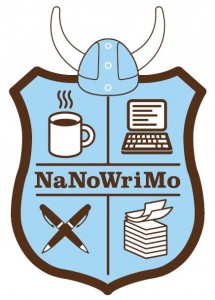 Sorry folks! I’ve been taken away from my blog and my writing once again by a slew of crazy things (some not so great, some friggin AWESOME), but that’s for another post. Let’s get back into plotting out novels and screenplays!
Sorry folks! I’ve been taken away from my blog and my writing once again by a slew of crazy things (some not so great, some friggin AWESOME), but that’s for another post. Let’s get back into plotting out novels and screenplays!
We’ve already talked about beats, what they are, and how we start organizing them into a beat sheet. So let’s go into a bit more detail on the beat sheet and how it can help us. The first way a beat sheet is a god-send is that it help us to:
Organize Our Story
 Now some of ya’ll who like to write by the seats of your pants might kill me on this post, so bear with me! I’m a believer in writing with reckless chaotic abandon and letting the story develop itself, for sure! BUT I’m more of a “chaos within the order”, kind of girl. I like to have certain milestones in my story laid down first.
Now some of ya’ll who like to write by the seats of your pants might kill me on this post, so bear with me! I’m a believer in writing with reckless chaotic abandon and letting the story develop itself, for sure! BUT I’m more of a “chaos within the order”, kind of girl. I like to have certain milestones in my story laid down first.
Using a beat sheet, I develop a map of my beginning point, midpoint, and end point. Once those are down, then I get crazy, driving over hills, mountains, through ravines, off cliffs… you get the picture! Wanna try it? Let’s start simple!
ACTIVITY #1: ORGANIZING YOUR STORY IN THREE PARTS
 1. Divide your story up into three major parts: Beginning, Middle, and End, as follows:
1. Divide your story up into three major parts: Beginning, Middle, and End, as follows:
A. Beginning:
B. Middle:
C. End:
See? Simple, right? Now onto #2.
2. Write 1-3 sentences describing (very broadly) what happens in each of these three sections. Important note: there are three simple but major things to remember when dealing with each of these parts of your story, and those are:
 A. In the Beginning, everything is fine & status quo, then crazy shit happens, forcing the hero to do something about it
A. In the Beginning, everything is fine & status quo, then crazy shit happens, forcing the hero to do something about it
B. In the Middle, crazy shit escalates into even crazier shit, forcing the hero to push his limits to do something about it
C. In the End, crazy shit escalates to the highest level, and the hero’s (and usually, the world’s) very reality and existence are threatened, which forces the hero to be the best or worst of himself and resolve the crazy shit
So let’s do it. I’ll use “Colby Assassin” as an example:
A. Beginning: Colby is a loving housewife and mother who, since birth, has been trained as a ninja assassin. Her husband and son are unaware of her other profession. One day, Colby receives a mission from her shogun that conflicts with her motherly-wifely duties but will bring peace to the world. For the greater good, she chooses to abandon her family to complete the mission.
B. Middle: Colby continues to abandon her family to complete her “greater good” missions, all while believing she is trying to do her best by them. The shogun is pleased with her performance, but sees that her family is her weakness and a problem. He sends more missions for her to complete, which separate her more from her family and causes lots of strife at home.
all while believing she is trying to do her best by them. The shogun is pleased with her performance, but sees that her family is her weakness and a problem. He sends more missions for her to complete, which separate her more from her family and causes lots of strife at home.
C. End: Colby’s family is kidnapped by the evil shogun as a demonstration of his power and her servitude to his will. He wants to rid her of her weakness once and for all. But Colby realizes that her family is actually her strength, they are the greater good, and so she balances her ninja skills with love to both defeat the shogun and save her family.
Give it a whirl, and see how it begins to organize your story!
ACTIVITY #2: BRINGING BACK “CAUSE-AND-EFFECT”
 Remember that “Cause-and-Effect” Beat exercise we did in the last post? Well, it’s time to dig that back out and dust it off! Here’s how it can help you:
Remember that “Cause-and-Effect” Beat exercise we did in the last post? Well, it’s time to dig that back out and dust it off! Here’s how it can help you:
1. Organize your beats (roughly) into the beginning category, middle category, or end category! Seeing as you have a rough idea of what happens in your beginning, middle, and end, you can look at ALL your beats you created for your world and your characters and evaluate them.
For each beat, ask yourself: is this a “status quo” / beginning beat? Is it a resolution beat?  Or is this a “crazy shit gets crazier beat”? Classify your beats and watch your story take shape right in front of you!
Or is this a “crazy shit gets crazier beat”? Classify your beats and watch your story take shape right in front of you!
In our next posts we’ll take each section of our story (Beginning, then Middle, then End), and flush out each section into smaller, more manageable pieces. Then we’ll use those pieces to build on and strengthen our story structure! Stay tuned, but in the meantime, here’s an inspirational word and song from our sponsors…
NaNoWri/ScriMo Inspirational Quote & Song of the Day
“When you march to the beat of your own drum, you will always be in sync.” – Me
And now, a word from one of the world’s most inspirational artists of all time, Michael Jackson. Unbreakable, baby. It’s what we are as writers! 😉
And that’s all, everyone! Hope this beat sheet helps you to start thinking about your novel from a more cinematic perspective and your screenplay from a more structured one. Do you have any “BFG”s that you use in your writing that help you with plotting? Drop your suggestions here! 🙂
Keep it indie (and write on, rock on),
<3 Colby
P.S. I’m sure you’ve noticed that I’m super behind in my NaNoWriMo word count. I’ve got about 10% of my novel done at 5,704 words. Can I make up the difference in the next two weeks? 😉 Guess we’ll be finding out! Stay tuned.

